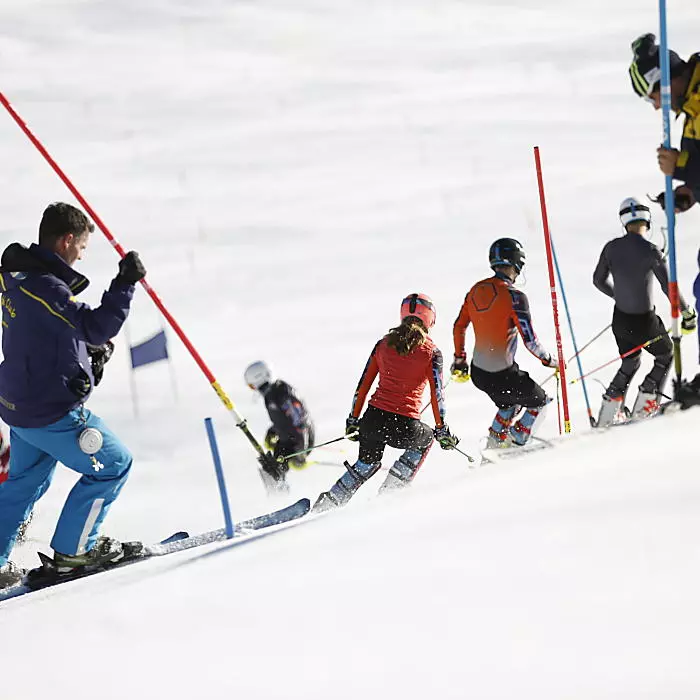High altitude training: the benefits for professionals
Val Senales as a varied training site
Every year from mid-September, the world's skiing elite gather on the Val Senales Glacier to prepare for the upcoming competition season. 40 special training runs are available for this purpose. But why is altitude training so popular? And how can you reap the benefits, too?
What is high altitude training?
During altitude training, athletes complete their training sessions at high altitude. What is the best height for altitude training? A positive effect can be seen from around 1800 metres, so most altitude training sessions take place between 1800 and 2500 metres. Why is high altitude training harder? At this altitude, the air pressure drops noticeably - as a result, the body can absorb less oxygen and the cardiovascular system has to work harder. However, if you were to ascend too high, the disadvantages would outweigh the benefits. In the first phase, during acclimatisation, there is usually a slight drop in performance.
How can I increase my stamina in high altitude?
High altitude training has many benefits if carried out correctly. It is important not to overstrain the body: as an amateur athlete, altitude training only makes sense if you are in good health. The advantage of training at high altitude is that the body gradually adapts to the changed oxygen conditions: more red blood cells are produced to compensate for the lack of oxygen. At the same time, heart volume increases, blood flow to the muscles and skin is improved, fat metabolism is accelerated, endurance is improved, and recovery time is shortened. Once you have become accustomed to training at high altitude, you will notice an increase in performance when exercising at lower altitudes.
Does altitude training wear off?
Top athletes usually complete their altitude training in the form of intensive camps lasting several weeks. However, how long you need to do altitude training depends on many factors. As an amateur athlete, you can benefit even from regular physical activity in the mountains. Just as the body has to get used to the altitude, it also slowly goes back to normal after returning to the valley. The effect of intensive altitude training therefore lasts for three to five weeks - but you can always refresh it by visiting the mountain again.
For whom is altitude training recommended?
Altitude training has proven to be particularly effective for endurance athletes. In Val Senales we offer skiers (on the glacier), canoeists (on the Vernago reservoir) and swimmers (in the Olympic indoor pool in Maso Corto) the best conditions to prepare for their competitions. The effect shows when the athletes complete their training plan here at altitude - without any further interventions.
But anyone can benefit from our excellent location. On the Val Senales Glacier, you can choose from 26 kilometres of easy and intermediate slopes as well as 16 kilometres of difficult slopes - at an altitude of 2000 to 3212 metres. Our publicly accessible slopes are therefore also suitable for your private altitude training if you want to improve your endurance and performance. You can hire canoes or take part in guided trips on the Vernago reservoir. The Olympic indoor pool is open to the public daily from 10 a.m. to 12 p.m. and from 2 p.m. to 7:45 p.m. - all day in case of bad weather.
Would you also like to complete your first training at one of the best places in the world to do altitude training? Whether you’re a skier, cross-country skier, canoeist or swimmer, you will soon start to see the high altitude training benefits. We await you in Val Senales and on the Val Senales Glacier!
Here you can find out more about our altitude training and here is an overview of our ski passes and offers.




